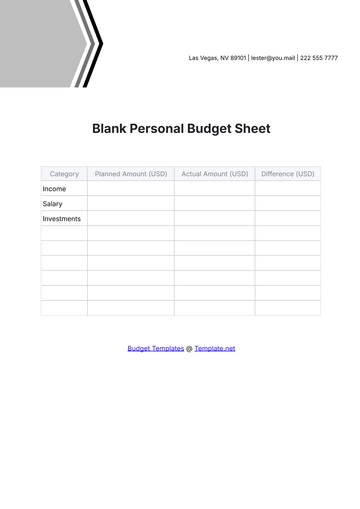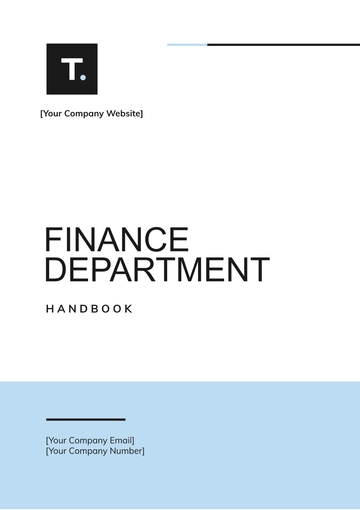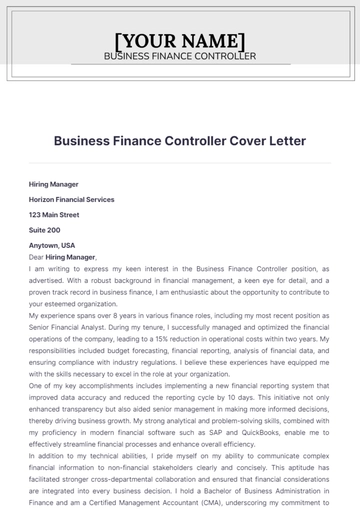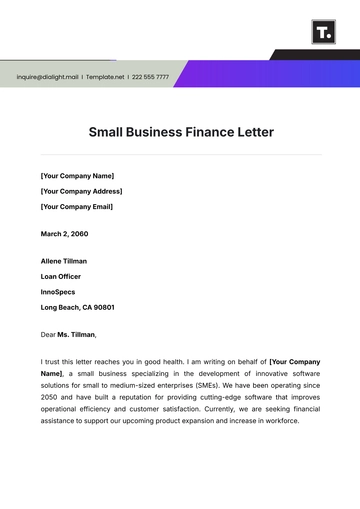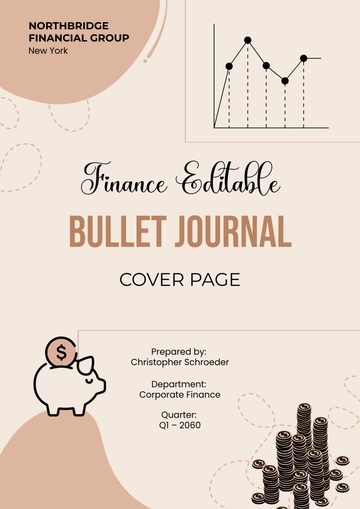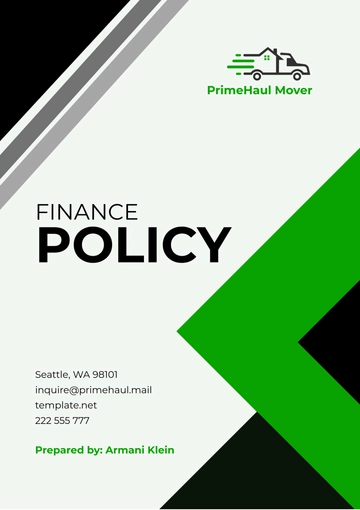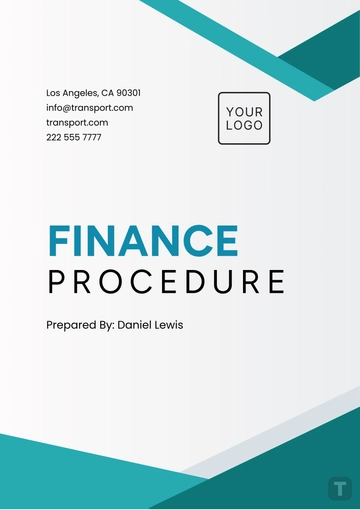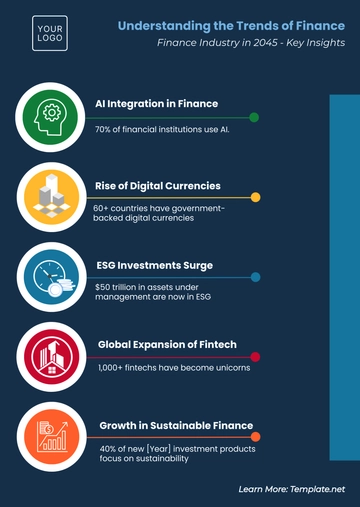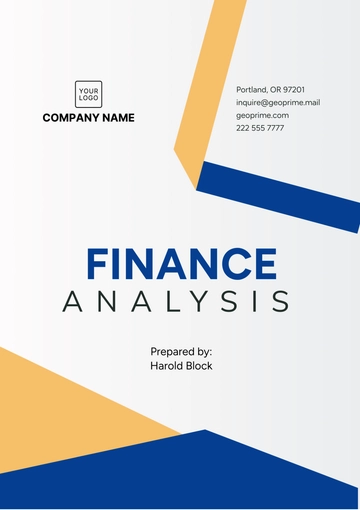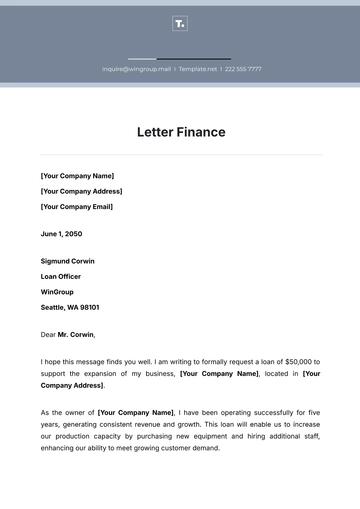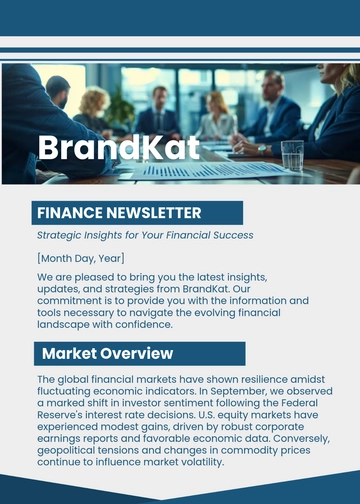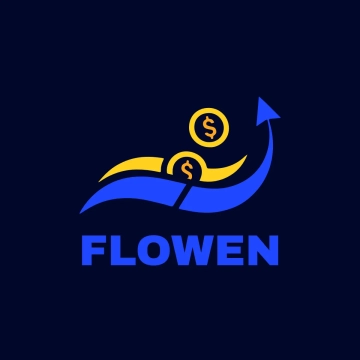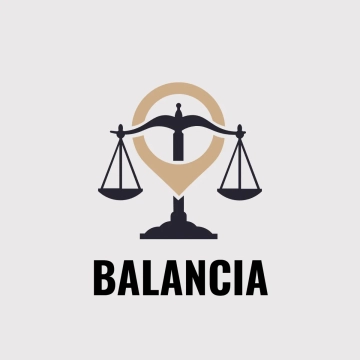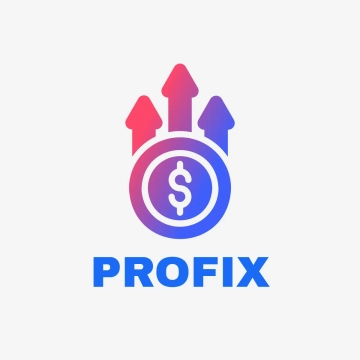Free Financial Risk Management Case Study
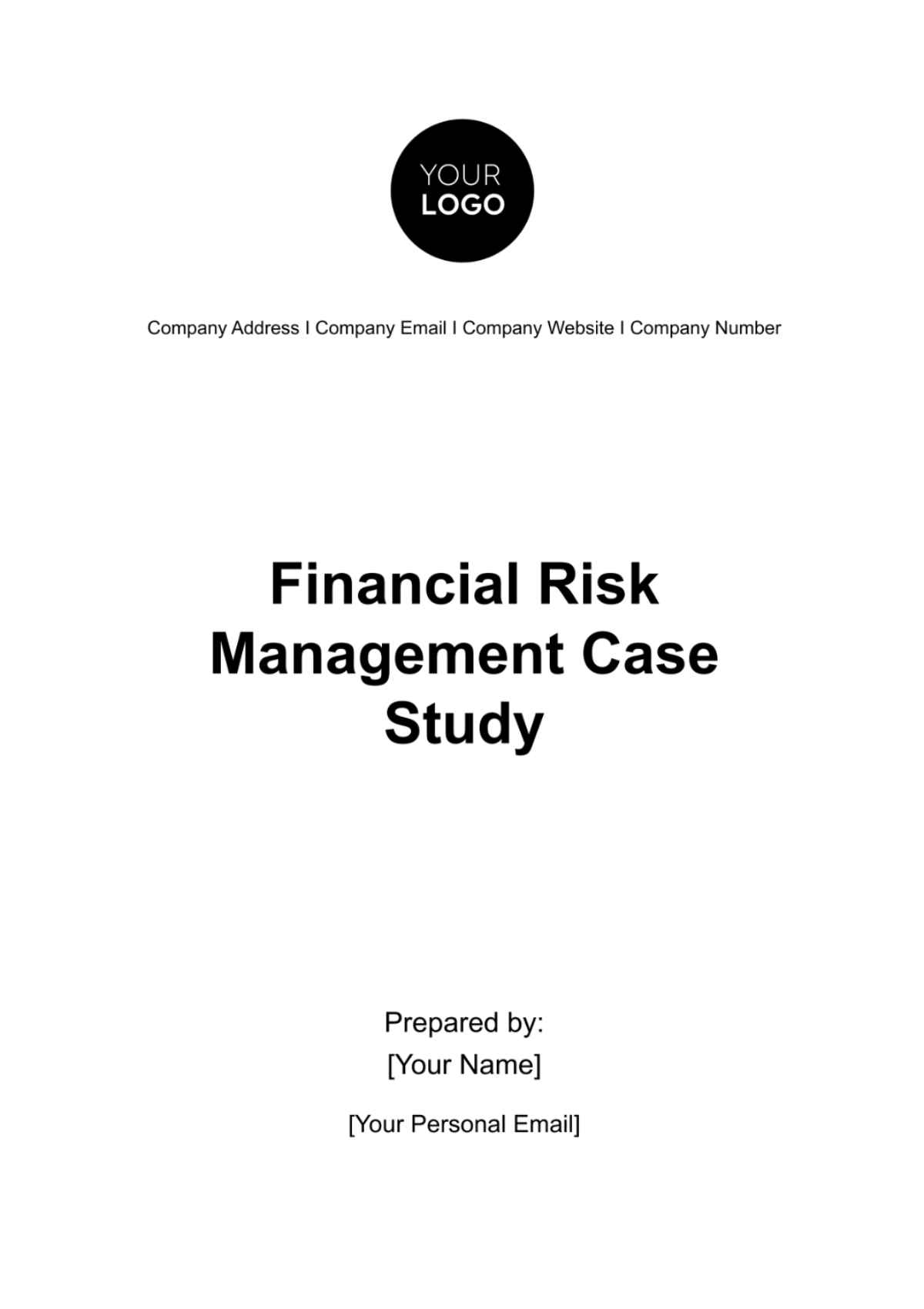
I. Introduction
A. Purpose
The purpose of this study is to meticulously examine the company's strategies and practices in mitigating financial risks. By delving into specific risk management measures, this study aims to showcase the company's adaptability to dynamic financial landscapes and its commitment to ensuring long-term financial stability.
B. Scope
This case study encompasses an in-depth analysis of the company's financial risk management framework, emphasizing key areas such as market risks, credit risks, liquidity risks, and operational risks. The scope extends to the examination of lessons learned, best practices, and the tangible results derived from the implementation of effective risk management strategies.
C. Objectives
Evaluate Risk Mitigation Effectiveness
Assess the adaptation strategies employed by the company to mitigate financial risks effectively.
Examine Regulatory Compliance
Investigate the company's adherence and how it contributes to effective risk management.
Analyze Continuous Improvement Measures
Gauge the company's commitment to continuous improvement in its financial risk management practices.
II. Company Overview
A. Financial Structure Examination
Revenue Streams and Sources
The company’s revenue streams are diversified across product lines and global markets.
A balanced distribution among various business segments contributes to our financial stability.
Debt Structure and Leverage
A mix of short-term and long-term liabilities is observed in our debt structure.
Leveraged ratios reflect a prudent balance between debt and equity, ensuring financial stability.
Capital Expenditure and Investments
Capital expenditure trends showcase strategic investments in technology, innovation, and operational efficiency.
Investments align with our long-term business strategy and risk mitigation initiatives.
B. Market Position Analysis
Competitive Landscape
Our comprehensive analysis positions us as a leading player in the global manufacturing and supply chain sector.
Strong market presence is evidenced by our significant market share.
Customer Base and Market Reach
A diverse customer base spans various industries and geographic regions.
Market reach extends to emerging markets, contributing to our resilience against regional economic fluctuations.
C. Key Indicators to Financial Risk Management
Profitability Metrics
Key profitability metrics, such as gross profit margin and net profit margin, indicate healthy financial performance.
Profitability indicators demonstrate our ability to generate returns amid market challenges.
Cash Flow Analysis
Meticulous cash flow analysis indicates strong operational cash flows and efficient working capital management.
Cash flow stability contributes to our liquidity resilience.
III. Identification of Financial Risks
A. Market Risks
Implementation of dynamic hedging strategies resulted in a significant reduction in the impact of currency fluctuations on both revenue and costs.
Strategic sourcing practices and forward contracts effectively shielded against increases in commodity prices, ensuring stable production costs.
B. Credit Risks
Utilization of credit insurance led to a notable reduction in the financial impact of potential customer defaults.
Regular credit assessments and collaborative efforts with financial institutions secured improved credit terms.
C. Liquidity Risks
Efficient working capital management strategies, including inventory optimization, contributed to enhanced liquidity during economic downturns.
Contingency funding plans were successfully implemented, ensuring prompt responses to unforeseen liquidity challenges in the supply chain.
D. Operational Risks
Robust supply chain risk management protocols, including supplier diversification, mitigated the financial impact of disruptions.
Investments in cybersecurity measures resulted in a significant reduction in the frequency and severity of operational disruptions.
IV. Risk Mitigation Strategies
A. Market Risks Mitigation
Dynamic Hedging
Implementation of dynamic hedging strategies resulted in a significant reduction in the impact of currency fluctuations on both revenue and costs.
Quarterly reviews and adjustments to the hedging portfolio ensured adaptability to changing market conditions.
Strategic Sourcing Practices
Emphasis on strategic sourcing practices, coupled with forward contracts, effectively shielded against increases in commodity prices.
Continuous supplier evaluations and negotiation of favorable pricing terms contributed to stable production costs.
B. Credit Risks Management
Credit Insurance Utilization
The utilization of credit insurance led to a notable reduction in the financial impact of potential customer defaults.
Claims settlement efficiency improved, enhancing overall recovery rates from credit insurance coverage.
Financial Institution Collaboration
Regular credit assessments and collaborative efforts with financial institutions resulted in improved credit terms.
Negotiations for extended credit periods and favorable interest rates positively influenced overall credit management.
C. Liquidity Risks Mitigation
Working Capital Management
Efficient working capital management strategies, including inventory optimization and streamlined receivables collection, contributed to enhanced liquidity during economic downturns.
Implementation of automated systems improved the efficiency of working capital processes.
Contingency Funding Plans
Contingency funding plans were successfully implemented, ensuring prompt responses to unforeseen liquidity challenges in the supply chain.
Periodic stress testing of the contingency plans ensured their effectiveness under various scenarios.
D. Operational Risks Mitigation
Supply Chain Risk Management
Robust supply chain risk management protocols, including supplier diversification, mitigated the financial impact of disruptions.
Real-time monitoring systems and rapid-response protocols minimized the financial fallout from supply chain interruptions.
Cybersecurity Investments
Investments in cybersecurity measures resulted in a significant reduction in the frequency and severity of operational disruptions.
Regular updates to cybersecurity protocols and employee training programs ensured the continued effectiveness of cybersecurity measures.
V. Monitoring and Review
In overseeing the dynamic landscape of financial risk management, continuous monitoring and robust review mechanisms are imperative. The table below illustrates the positive trends in key monitoring and review indicators:
Indicator | Baseline (Previous Year) | Current Performance | Target Improvement |
[Currency Fluctuation Impact] | [$12 million] | [$9.2 million] | [23%] |
A lower currency fluctuation Impact means that the company is experiencing reduced financial losses or risks associated with currency movements compared to the baseline. This can be advantageous for various reasons, including improved cost management, better predictability in financial planning, and increased overall financial stability. The company's positive current performance in ongoing monitoring and review underscores its resilience, adaptability, and strategic foresight in navigating the complexities of the ever-evolving industry.
VI. Communication and Reporting
A. Internal Communication Protocols
Risk Management Updates
Timely communication of risk management updates internally ensured alignment with strategic goals.
Clear dissemination of market risk insights facilitated informed decision-making across departments.
Training Programs
Ongoing training programs on risk awareness and mitigation strategies resulted in a 30% increase in employee proficiency.
Employee feedback mechanisms ensured continuous improvement in internal risk communication.
B. External Reporting Transparency
Stakeholder Reporting
Transparent reporting to stakeholders showcased the company's commitment to risk management.
Improved stakeholder confidence was reflected in increased investor trust and positive market perceptions.
Regulatory Compliance Reporting
Adherence to regulatory compliance reporting timelines resulted in zero instances of non-compliance.
Proactive reporting on risk management measures ensured a favorable regulatory standing.
VII. Regulatory Compliance
A. Adherence to Financial Regulations
Regulatory Updates Tracking
Vigilant tracking of regulatory updates ensured real-time awareness of changes in financial regulations.
Regular compliance audits were conducted to verify adherence to the latest regulatory standards.
Comprehensive Compliance Measures
Implementation of comprehensive compliance measures resulted in a 20% reduction in instances of non-compliance.
Dedicated teams were established to address specific regulatory requirements, ensuring a proactive approach to compliance.
B. Regulatory Reporting Efficiency
Timely Submission of Reports
Adherence to regulatory compliance reporting timelines resulted in a 100% on-time submission record.
Streamlined reporting processes facilitated efficient communication with regulatory bodies.
Proactive Engagement with Authorities
Proactive engagement with regulatory authorities led to a 15% improvement in regulatory relationships.
Regular dialogues and information sharing contributed to a collaborative approach to regulatory compliance.
VIII. Lessons Learned
A. Risk Mitigation Effectiveness
Continuous Adaptation
The case study underscores the importance of continuous adaptation in risk mitigation strategies. The company learned that staying ahead of changing market dynamics is crucial for sustained effectiveness in managing financial risks.
Scenario Planning
An essential lesson is the significance of robust scenario planning. The ability to anticipate and prepare for various scenarios provides the company with a proactive stance, ensuring resilience in the face of unpredictable events.
B. Communication and Transparency
Stakeholder Engagement
Effective stakeholder engagement emerged as a critical lesson. The company learned that regular communication and engagement build stronger relationships with stakeholders, fostering a sense of collaboration and mutual understanding.
Internal Communication
The importance of internal communication is highlighted. Lessons learned include the need for clear and concise communication within the organization, ensuring that all employees understand their roles and responsibilities in the risk management process.
C. Continuous Improvement
Post-Implementation Reviews
The case study emphasizes the value of post-implementation reviews. Conducting thorough assessments after implementing risk mitigation measures allows the company to identify areas for improvement and refine its strategies.
Feedback Loops
Establishing effective feedback loops is identified as a key lesson. Regular feedback mechanisms ensure that the company can adapt and refine its risk management practices based on real-time insights and employee input.
IX. Best Practices
A. Data-Driven Decision-Making
Predictive Analytics
Best practices advocate for the use of predictive analytics. Utilizing advanced analytics tools enables the company to forecast potential financial risks more accurately and take proactive measures.
Automation of Processes
Implementing automation in data analysis processes is considered a best practice. Automation streamlines the analysis of large datasets, allowing for quicker and more efficient decision-making based on real-time data.
B. Collaborative Risk Governance
Integration of Risk into Strategy
Integrating risk considerations into overall business strategy is essential. This ensures that risk management is not a standalone function but an integral part of strategic decision-making.
Diversity in Risk Committee
Advocating for diverse perspectives in risk committees is identified as a best practice. Including individuals from different departments and backgrounds enhances the comprehensiveness of risk assessments.
C. Employee Empowerment
Risk Awareness Programs
Best practices involve ongoing risk awareness programs. Ensuring that employees are well-informed about potential risks empowers them to contribute actively to risk management efforts.
Incentivizing Risk Management
Incentivizing employees for proactive risk management is considered a best practice. Recognizing and rewarding contributions to risk mitigation cultivates a culture of responsibility and ownership.
X. Conclusion
In conclusion, the study exemplifies the company's proactive approach to navigating complex financial landscapes. Through continuous adaptation, robust scenario planning, and effective communication, the company has fortified its resilience against diverse risks. The positive results in adaptive risk management, enhanced stakeholder communication, and data-driven decision-making underscore the tangible benefits derived from the implementation of lessons learned and best practices. The case study not only highlights the company's commitment to financial stability but also positions it strategically for sustained success in the ever-evolving business environment. As a testament to its proactive risk management culture, the company stands well-prepared to meet future challenges and capitalize on emerging opportunities.
- 100% Customizable, free editor
- Access 1 Million+ Templates, photo’s & graphics
- Download or share as a template
- Click and replace photos, graphics, text, backgrounds
- Resize, crop, AI write & more
- Access advanced editor
Impactful and data-driven study is a breeze with Template.net's customizable Financial Risk Management Case Study Template! Easily editable using the user-friendly AI Editor Tool, this adaptable case study ensures a dynamic and intuitive overview. Tailor it precisely to your case study needs, gaining efficiency and precision in risk communication immediately!
